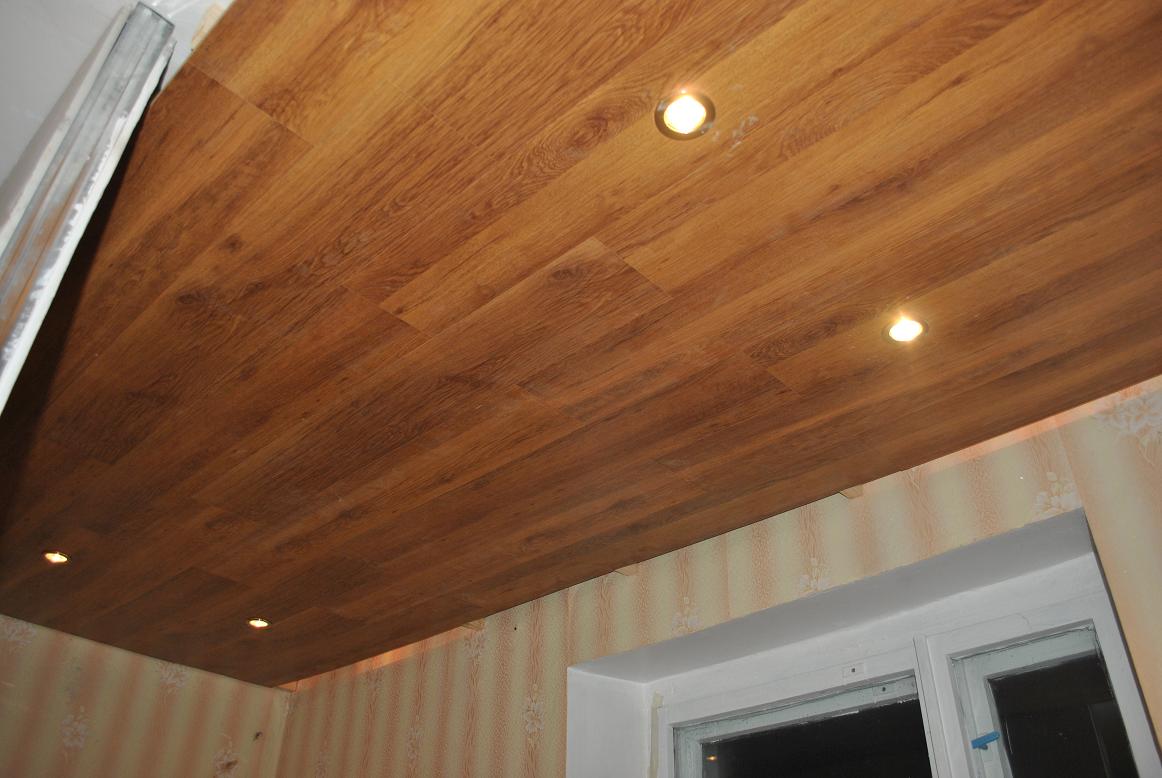How to remove a suspended ceiling
High quality stretch fabric can last up to 20 years. But it may become necessary to dismantle it. For example, if the neighbors flooded and you need to remove the water. There are several methods for removing a stretch ceiling, depending on the characteristics of the fastening. It is worth studying all the nuances of the procedure.
The content of the article
What you need to know about suspended ceilings before removal
You can dismantle it yourself. You just need to decide what exactly the procedure is for. Sometimes there is no need to remove the entire canvas; it is enough to remove only part.
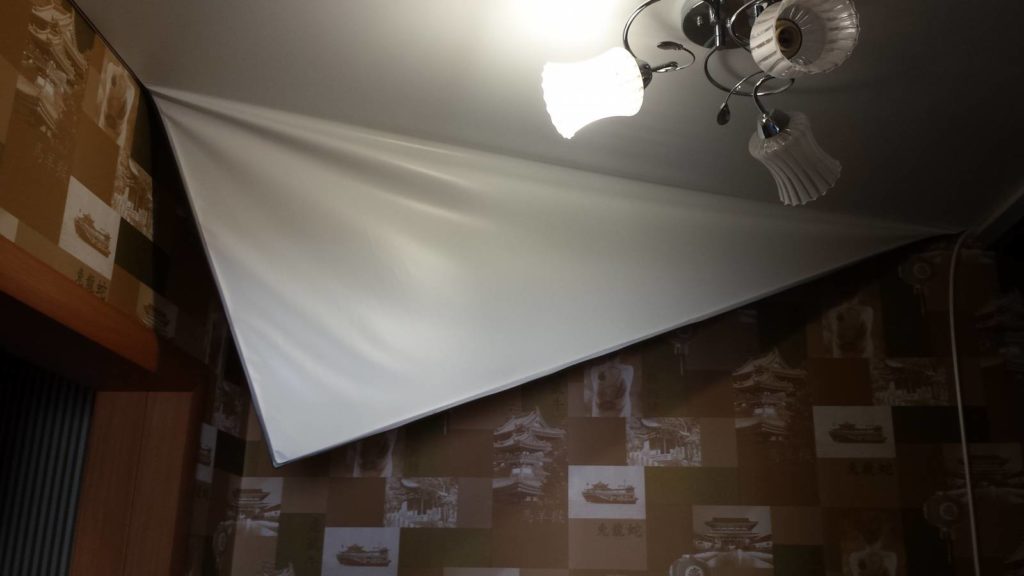
Reference. Before dismantling, you should find out what type of structure and fastening was used. The choice of coating removal technology depends on this.
If the cause of such work is a flood, then first get rid of the water. It is enough to remove any ceiling lamp and drain excess liquid through the resulting hole. Another way is to carefully bend the corner and pour it into a bucket.
Dismantling a stretch ceiling
The process consists of several stages. Preparation is a must.Then they act based on the type of structure that was used to cover the ceiling.
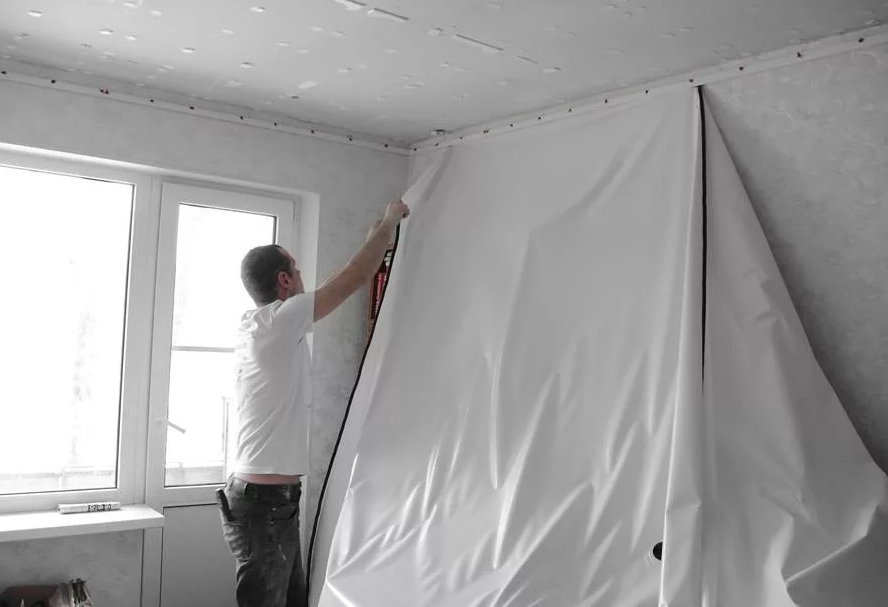
Preparation
They start by clearing out the premises. All items that can be removed are removed. The rest, heavier ones, must be covered with a protective film. The room should be as spacious as possible. Remove lighting fixtures from the ceiling.
You will also need to prepare your tools. It is more convenient to work on a stepladder, otherwise it will be difficult to reach the desired area. You may need a heat gun, spatulas of various sizes, and special clamps that can be used to conveniently hold the canvas. Additionally, take pliers and a screwdriver. You can also use a knife and mounting tape.
Then they check how the canvas is attached to the structure and act according to one of the suitable methods.
How to remove a suspended ceiling with a harpoon mount
This type is a flexible plastic strip. It received its name due to its external resemblance to a harpoon. In this case, you can dismantle it yourself. First, you should warm up the vinyl sheet using a heat gun. It is enough to set the temperature to 70 degrees. This will allow the material to become more flexible and pliable.
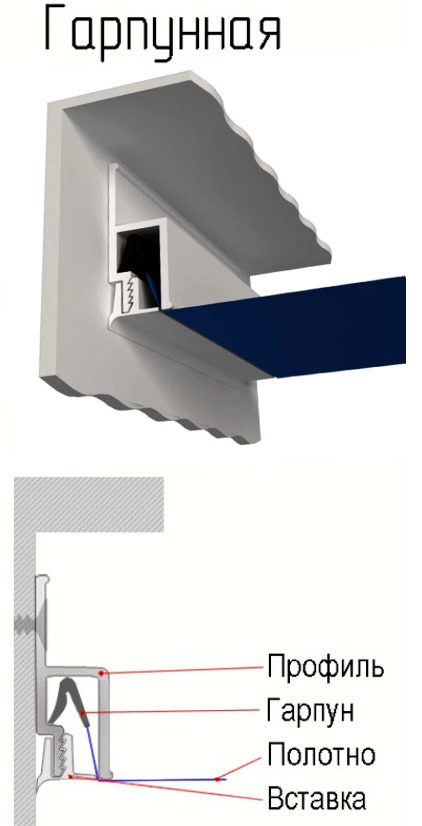
Important. Removal begins from the corner. You can heat only the area of the surface from which the harpoon will be removed. Instead of a heat gun, it is permissible to use a hairdryer.
When dismantling, it is necessary to remove the harpoon from the protrusion, which is located inside the profile. Then the rest of the canvas is simply pulled out. It is recommended to proceed as follows:
- Heat the surface evenly starting from the central part and moving towards the corners.
- Find an area with a fairly large gap between the structure and the wall.This should not be the place where the harpoon is glued end-to-end, otherwise the film will simply tear under physical impact.
- Use a screwdriver to press out the fastener. A curved spatula is inserted into the resulting space and a harpoon is attached.
- Then they begin to move it in different directions to squeeze it off the baguette. On the perpendicular side you need to do the same steps. This will allow you to hook the harpoon with several blades.
- They begin to pull their shoulder blades down, parallel to the wall. It is important not to use too much force or act harshly.
When the harpoon and the film come out of the profile, you should move along the wall, carefully pulling out the PVC in parallel. When working over a large area, it is recommended to use clamps. This will prevent deformation and strong stretching of the film.
Reference. For a small space, you may not need to use preheating. But if the ceiling has a large area, then this process is required.
Dismantling a PVC ceiling with other types of fastening
In addition to what is described above, other types of fixation are also used. The further progress of work depends on this. The following types exist:
- Beading. Used for fabrics. It is characterized by high cost. The system is self-clamping. First, fix the baguette, then fix the corner of the canvas into it, leaving an allowance of a few centimeters, and begin tensioning. The structure is fixed using a bead. It presses itself against the profile under the pressure of the web. To dismantle, you must first remove the glazing bead, then proceed to carefully remove the product.
- Cam. Also called clip-on. Suitable for both woven and vinyl fabrics. The most popular type.Common due to its affordable cost and ease of installation. Allows you to obtain a seamless fabric due to the fact that a minimum indentation from the ceiling is required. The fastening resembles a self-clamp. During installation, the canvas is stretched thanks to movable cams or clips. They also serve as fastening of the material. Dismantling is carried out with a spatula. It is better if it is made of plastic to preserve the canvas. It is enough to squeeze it out with a spatula, remove it, and then pull out the material. It is recommended to start work from the corner where the free end is located. If he is not there, they are released on their own.
- Klinovoe. The wedges that serve as fastenings are driven into the baguette during the installation stage. For a tight clamp, a ceiling plinth is used. It performs several functions, acquiring the role of a decorative element. This type is the easiest to dismantle. There is no need to pull out the material. It is enough to remove the baseboard from the structure. This will weaken the wedge. Then, using a spatula, pull off the fasteners. They take out the wedge and remove the cloth.
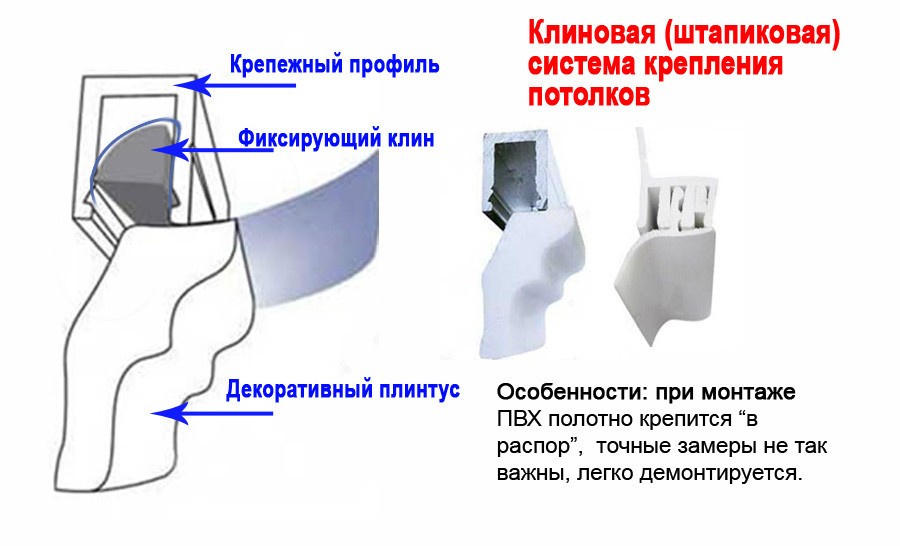
Attention! Some types of fastening that involve clamping the material damage it. It is unlikely that it will be possible to pull it back. Therefore, it is necessary to assess the situation in advance and decide whether there really is no other option to correct it. Otherwise, it may be necessary to install new tension material.
Features of removing fabric
It was noted that in most cases, glazing beads or clips are used to fasten this type of material. When dismantling them, it is not necessary to heat the surface much. The product is fixed with self-clamps. Therefore, it is necessary to remove the coating completely. Or the fastening systems or baguette are deformed.
With the glazing bead option, they begin by removing the baseboard. Then bend the profile and remove the fasteners.The canvas is ready to be removed. When performing all the described actions, it is necessary to constantly warm up the working area using a gun or hair dryer. The coating should not cool down. Otherwise, sagging or minor cracking cannot be avoided.
It is necessary to remove the baguette as carefully as possible. This will keep it intact and without damage.
In most cases, skirting boards are glued to the wall. This allows you not to stain the material with glue and not to change it if it is necessary to repair the ceiling covering. But if it is glued to the ceiling, then additional difficulties arise, because it must be disconnected from the material, and not from the wall.
When fastened with clips, the fabric trim is completely removed. You cannot dismantle only part of it. This may cause the blade to fall out of the remaining clamps, which will damage the product.
Fabric types do not have seams. Therefore, removing them is easier. No additional tools or unnecessary manipulations are required. For any fastening system, dismantling should begin from the middle.
Is it possible to remove a suspended ceiling and stretch it again?
Any fabric is suitable for removal. However, not every one is suitable for re-installation. Recycling is affected by the type of fastening. Also, if dismantling was carried out roughly or with errors, the material is deformed and its further use is impossible. This also applies to situations where you plan to move material from one room to another. In this case, it is necessary to take into account many nuances, including the coincidence of both rooms in area. The second room may be smaller, but not larger.
Re-tensioning is possible only if the removal was carried out carefully and correctly, and the fastening system requires subsequent use of the canvas.
Despite the durability of the tension structure, sometimes it becomes necessary to remove it. To do this, you need to consider the type of fastening and whether the canvas will be reused. But first you should evaluate the need for dismantling. Perhaps the problem can be eliminated without resorting to such a radical method.





